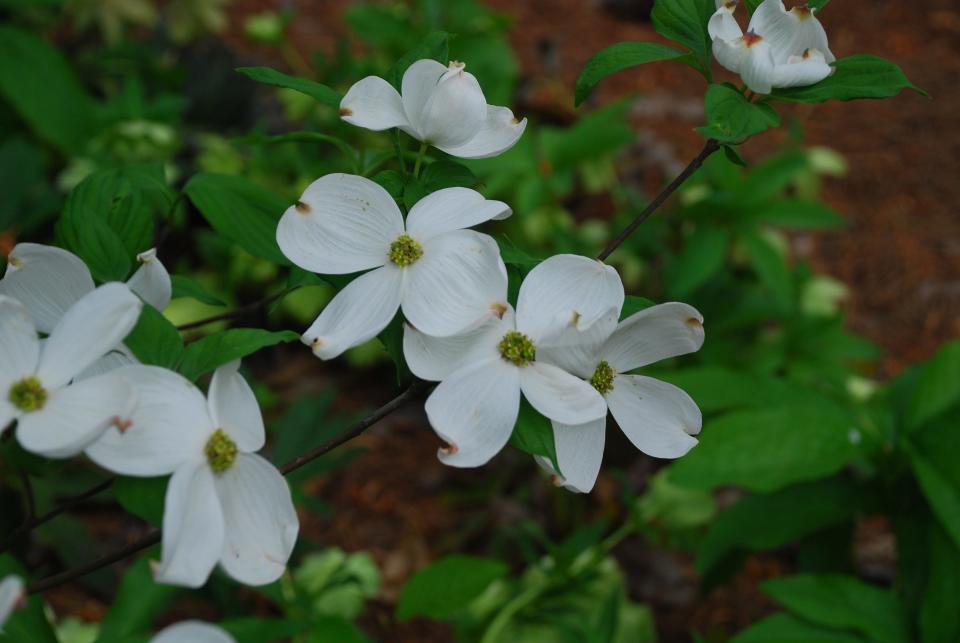Gardening: Flower power in trees
What is more breathtaking than to see flowering trees in full regale in the spring. There are several trees that get an early start like some of the early Japanese cherries, cornelian cherry dogwood, and star magnolias that brighten up the landscape and relieve us of those drab winter days. There are also some wonderful native trees that need to be added to this list.
Now you might say, why are native trees so special? Well, native trees are adapted to a certain place and so their needs are less. They have lower maintenance cost and eliminate the need for supplemental irrigation, specialized fertilizers, herbicides, protection from cold and wind and just adapt better. Plus, we have some really pretty spring flowering native trees that you should consider when choosing a tree.
The delicate blossoms and buds of the Eastern Redbud tree present one of the seasons’ most dramatic displays. They are typically found in open woodlands and at the edge of wooded areas. They stand out because their vivid rosy-pink colored pea-like flowers, bloom before leaves appear. The flowers are held close to the branches and some even cover the trunks, concealing almost every inch of the tree. But the beauty does not stop here. The unique and irregular branching patterns also make a handsome display. They can handle some shade so they are great for adding color to a yard with existing shade. They only grow to about 20 feet. And if this is not enough, the leaf color of some of the newer varieties are worth purchasing just because they are so colorful. Some of the ones to look out for are: Carolina Sweetheart, Forest Pansy, Flame Thrower, Ruby falls and Rising Sun. The leaf color of these redbuds gives you a summer of pretty leaf color.

Our native dogwoods are another wonderful understory tree that light up the landscape in early spring. This tree is considered by some to be the most spectacular of the native, flowering trees. The flowering dogwood has a smaller structure than some trees but there is nothing small about the floral display of Cornus florida. The white or pink petals that appear are actually bracts or modified leaves that are arranged in distinctive groups of four, like a cross. But this is not the only time the dogwood shows off color. In the fall of the year, fantastic red-orange to burgundy foliage decorates the tree, showing a kaleidoscope of color. Mature trees most often have a broad-pyramidal form when grown in enough sun. It is known to have extremely hard wood and that it is shock-resistant and useful for making weaving-shuttles for weaving machines and well as spindles for the textile industry.
A little later to bloom in the spring are the white fringe trees, Chionanthus virginicus, always known to me growing up as Grandfather graybeard. Our next-door neighbor had one growing in their yard and I use to love to go break a few branches (with permission of course) and play with the flowers that dangled down. The unique beauty and the perfume from its unusual flowers were attractive to me. Each spring I could not wait for this tree to present its beautiful ribbon-like flowers that would appear in late spring. I have fond memories of this small tree to this day.
The flowers have a shimmering display of snowy-white, narrow-petaled flowers that are hanging from the branches like silk fringe. The only other tree I know that has a slight resemblance is its cousin the Chinese fringe tree but it does not quite match up to the flowers of Grandfather greybeard. This tree is small, ranges from 10 to 30 feet in height but I have never seen one over about 15 feet. The one in our garden was just the right size for the space and suddenly it was destroyed when a tornado came through our garden. After the clean-up from the storm, it was one of the first trees I located to plant again. It is now coming along and, in a few years, it will be the perfect size again.
Probably a little lesser grown and known is the Sweetbay magnolia, also known as swamp magnolia. It sports beautiful 2” to 3” creamy white blooms that light up the tree with a multitude of flowers in late spring that have a lemon scent. It has glistening dark green leaves that have a frosty appearance on the underside and the tree can either be deciduous or evergreen, depending on the climate where it is grown. It is a lovely evergreen in the South and a deciduous to semi-deciduous in the more northern areas. The flowers are not as large as those of its cousin, the Southern Magnolia, but they are generally more abundant. It flowers best in full sun and typically grows as a multi-stemmed specimen but can also be found with a single trunk. They are tolerant of wet soil and are a good option if you have a damp area that is too wet for other trees.
Today, there are many different sizes of the Southern Magnolia. They have many smaller varieties that will fit in most any garden and you can also start with a tree that is not too large and prune it to stay small and fit in a smaller space. Two of my favorite ones are ‘Teddy Bear’ and ‘Little Gem’ because of the size of the leaves. I like to use the leaves in flower arrangements and the small size of these leaves makes them easy to use in an arrangement. They both have lovely blooms that decorate the tree, usually blooming in May and June with a few blooms continuing through the summer.
Native trees are important for many reasons but sustaining a living landscape for birds and other wildlife as well and adding beauty to our gardens are reasons to plant them. Think about planting one of these lovely trees in your garden when it is time to plant a tree.
Betty Montgomery is a master gardener and author of “Hydrangeas: How To Grow, Cultivate & Enjoy,” and “A Four-Season Southern Garden.” She can be reached at bmontgomery40@gmail.com.

This article originally appeared on Herald-Journal: Flowering trees will regale you in the spring.

